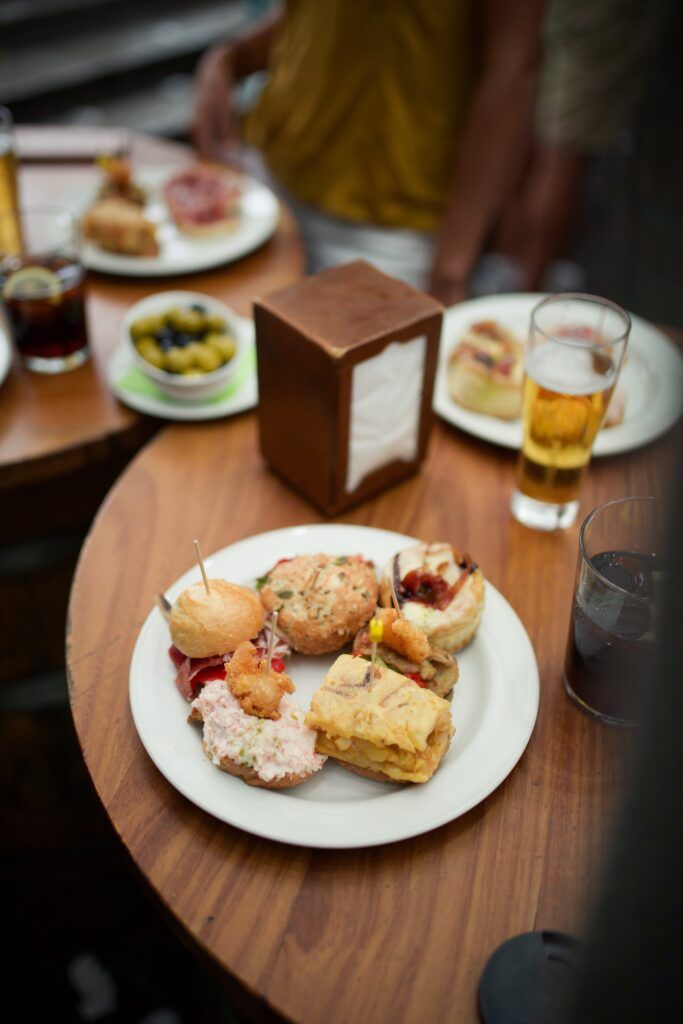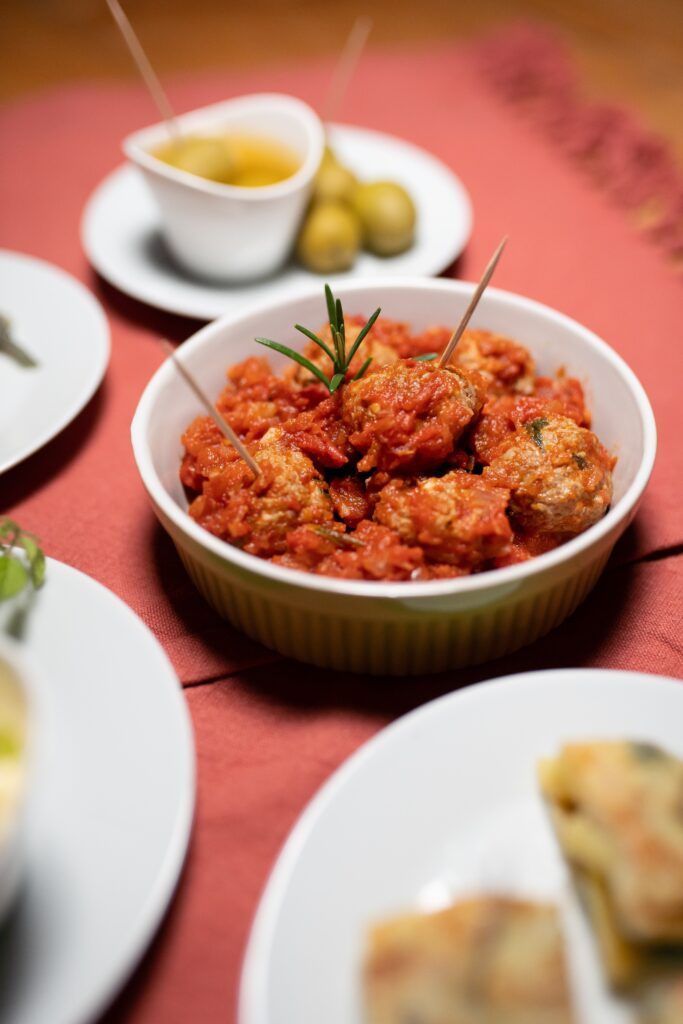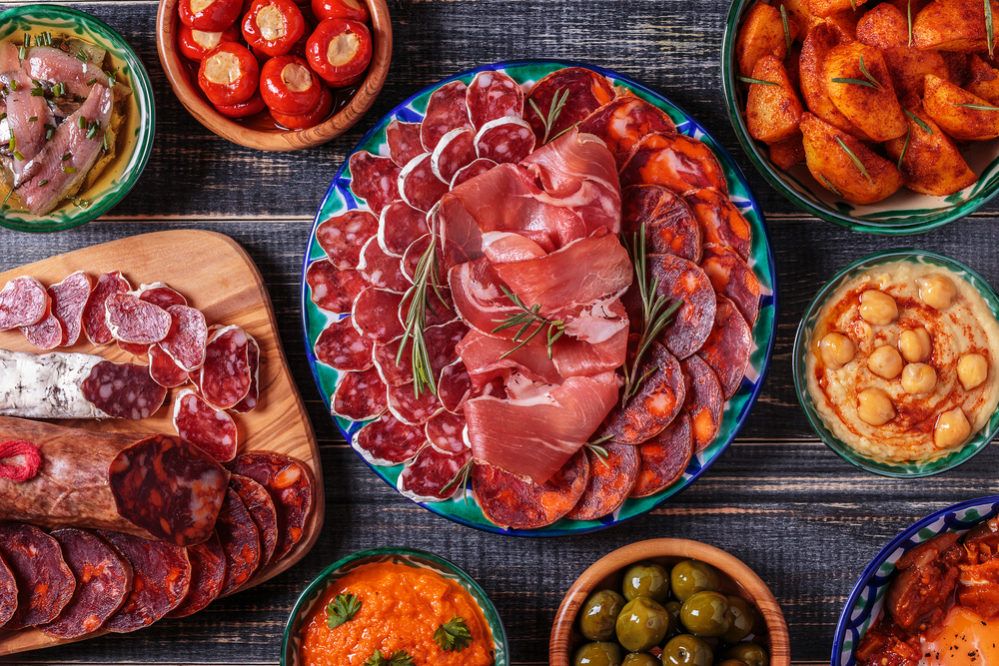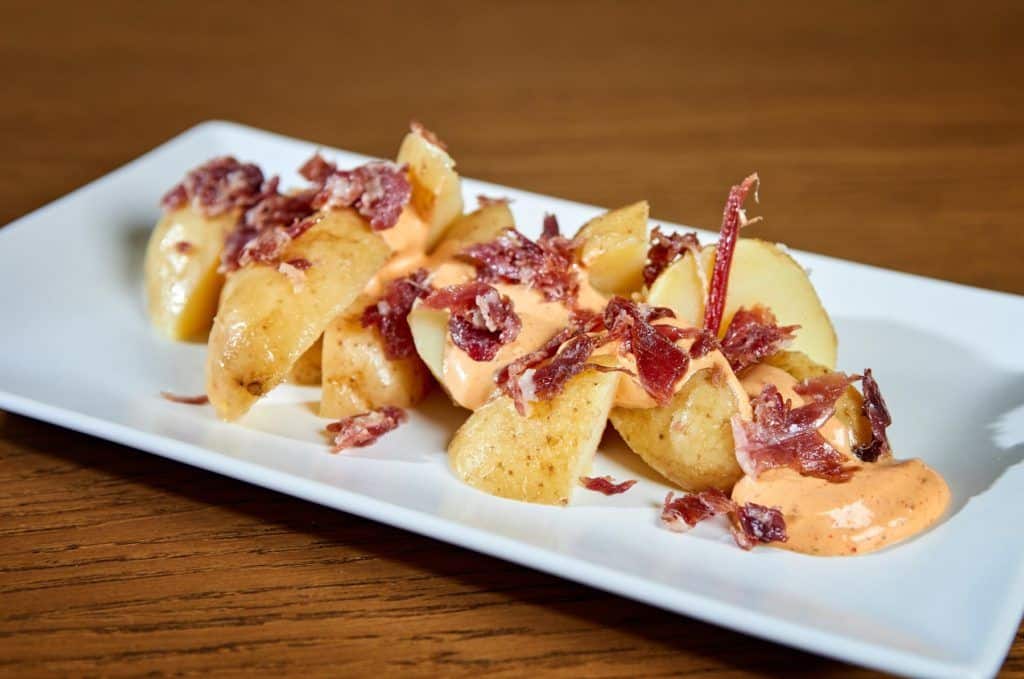
New letter black leg
Eating tapas-style has become a symbol of Spanish gastronomic culture. Over the years, this way of sharing and trying different dishes during meals has captivated all those tourists who travel to the Iberian Peninsula to enjoy the warm climate, the great atmosphere, and, of course, excellent gastronomy through Spanish tapas.
The emergence of Spanish tapas and "tapeo"
This gastronomic tradition dates back a long time, as even in the famous book "Don Quixote" by Cervantes, tapas were referred to as "attractive", just as Quevedo named them "notices" or "little notices" in his poems.
It's believed that the concept of "tapas" originated from King Alfonso X "The Wise", who decreed that in Castilian taverns, wine should not be served without being accompanied by some food, to prevent the alcoholic nature of wine from affecting the guests too much. In those times, a tapa was a slice of ham or any other cured product like sausage. This gastronomic custom of pairing drinks with food has persisted to this day, and similarly, we can say that ham remains one of the prominent Spanish tapas.
The Royal Spanish Academy defines "tapa" as any portion or solid food capable of accompanying a drink. However, over time, tapas have diversified significantly, and they are no longer only consumed to accompany a drink, but they have become another way of enjoying a dinner or a meal.
The concept of "tapeo"
We can no longer imagine moments of leisure without our famous tapas or without the typical "let's go for tapas." "Tapeo" is associated with sharing small portions of Spanish recipes in good company and almost always accompanied by wine or beer.
Spaniards often go out for tapas, an activity that combines many factors and characteristics that you'll only find in this country. It's a more informal way of eating and socializing; you can even enjoy tapas while standing at a bar, savoring a specific specialty.
Furthermore, it's a way to distribute consumption across multiple establishments. If a group of friends goes out for "tapas," it's common not to stick to just one bar but to try various places. Each location offers its own specialties, and by going from one to another, consuming drinks and tapas, you end up having dinner or lunch.
Tapas for Everyone
This typical way of enjoying restaurants and bars in our country has captured tourists, who are increasingly joining in this practice, unable to resist these small dishes that are part of our essence.
There are tapas that are complimentary in many places and can even be given with a drink, especially in the south of Spain. We're talking about olives, nuts, or the famous "montaditos," which are small sandwiches with various toppings. There are others that are more affordable than full dishes, as they are smaller in size, like Russian salad, croquettes, or meatballs.
And finally, there are tapas of high gastronomic value, where chefs showcase their creativity and culinary skills to create dishes that fit the "tapas" format while belonging to haute cuisine.

Spanish Tapas
 Spanish Tapas
Spanish Tapas
Spanish Iberian Tapas, an Essential Component of "Tapeo"
Iberian tapas like Iberian ham or Iberian cured meats are tapas with high gastronomic value. They are probably the quickest and simplest tapas to prepare, but what stands out is the exceptional quality of the products.
Iberian ham is the crown jewel, one of the most prized tapas in our country. It's an exclusive product of the Iberian Peninsula, coming from the Iberian pig, the only breed capable of infiltrating fat into the muscle. This unique characteristic, combined with the patient and delicate curing process, makes Iberian ham a complete delight for all palates. For this reason, it's considered one of the most gourmet Spanish tapas and a symbol of Spanish gastronomic culture.
Famous Spanish Tapas
At Enrique Tomás, as ham experts, we want to highlight three typical Spanish tapas that feature one of the star products made in Spain: Iberian ham. A captivating and extremely high-quality product that adds value to the tapas. We recommend trying them if you get the chance, either at our Enrique Tomás gourmet stores, or if you prefer, you can make them at home. Surprise your family or friends by organizing an informal dinner with Spanish tapas, a simple way to make them happy and let them taste the most delicious products from our land.

The Iberian Ham and Cured Meats Platter
The best way to savor the authentic taste of Iberian ham and cured meats is by enjoying them in thin slices on their own. This option can be found in many establishments in Spain and can easily be prepared at home if you have the right products. In our online store, you'll find all the ingredients for the platter in ready-to-eat sliced packs, you just need to open the pack a little before eating and you're ready to go.
We usually accompany this Iberian platter with some breadsticks. They help to complement the flavors, provide satiety, and their texture acts as a great palate cleanser, especially after eating ham. Why? Because they cleanse our tongue from excess salt and fat, preparing us for the next bite. And they're delicious, too!
Ingredients
- 100% Iberian acorn-fed ham
- Iberian acorn-fed chorizo
- Iberian acorn-fed salchichón
- Iberian acorn-fed loin
- Some Seville breadsticks to accompany.
All served on a large plate or tray, decorated as desired with fruits like grapes, a touch of mint for color, or whatever you prefer.
Enrique Tomás' Iberian Bravas Potatoes
Bravas potatoes with Iberian ham shavings are a creation of Enrique Tomás. Moreover, they're easy to cook and the result is amazing. The combination of well-baked potatoes with mildly spicy "brava" sauce and the intense flavor of Iberian ham shavings results in a truly original and appetizing dish, not only visually but also in taste.
Ingredients
- A serving of delicious well-cooked bravas potatoes (baked or boiled).
- Iberian ham shavings.
- A special mild brava sauce made from mayonnaise, tomato, extra virgin olive oil, and a pinch of salt and paprika.

There are many more options for Spanish tapas; you just have to use your culinary imagination and bring those dishes from your mind to reality. Cook them to your taste, always using quality products and, of course, Enrique Tomás ham.
Long live tapas!





